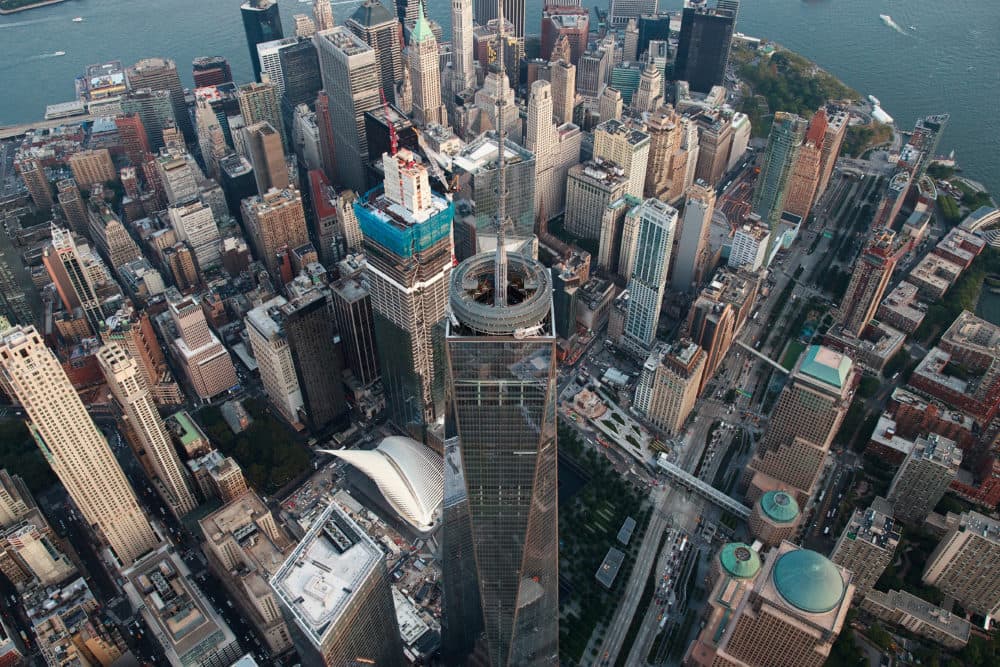Advertisement
The Case For Urban Living In The Age Of COVID-19
Resume
The COVID-19 pandemic pushed many people out of cities.
Cities were some of the hardest-hit by COVID-19, and now many residents are looking to escape that crush of humanity that drove them to urban dwellings in the first place. But architect and city planner Vishaan Chakrabarti still argues that more people should live in well-designed, dense cities.
Even though people tend to think of cities as heat islands that waste energy, Chakrabarti makes the case that urban living is the greenest and most sustainable choice one can make to save the planet. It’s true that cities are heat islands because of how many people live there, says Chakrabarti, founder of the New York-based Practice for Architecture and Urbanism firm and dean of the University of California Berkeley College of Environmental Design.
But the reason why city living itself is more sustainable goes back to the idea of the village, where people walked from place to place, he says. People who live in big cities similarly emit less carbon because they drive less and live in packed apartments that heat and cool each other.
“So there's about 7 billion people on the planet today. They'll be about 10 billion by 2100. How can those 10 billion people live on the planet, given the limited resources that it has?” he says. “And what I'm arguing is if most of those people live in denser circumstances, not just big cities, but just in more walkable places where they're driving less and they actually know their neighbors more, that they'll probably end up leading healthier lives and more sustainable lives.”
Big cities actually subsidize the suburbs, even though the common stereotype leads many people to believe the reverse — that cities leech off public money, Chakrabarti says.
“In the United States, about 97% of the GDP comes from about 3% of the land mass,” he says. “Where most of our tax base is generated from is in our big cities, and they do cross-subsidize a lot of the social safety net in a lot of the more rural parts of our economy.”
Another thing that keeps people out of cities is a love of cars, which the government also finances, Chakrabarti says.
“When a factory pollutes a river, we ask the factory to clean up the river. Economists call that a negative externality,” he says. “Most economists will tell you that when people drive, they have a huge impact on the rest of us in terms of pollution and congestion.”
If people were paying the actual cost of living in the suburbs, they would be paying a lot more for gas and in taxes, he says. But since the 1950s, the government has encouraged people to move to the suburbs by covering more of those costs.
“I believe people should live where they want to live, but you should have to really pay for the cost of your lifestyle,” he says. “And if we just, like, balanced the playing field, I think a lot of young people would gravitate back toward those cities.”
That's exactly the direction many young people have been going in, Chakrabarti says, gravitating toward the New Yorks and San Franciscos of the country but also “second-tier cities have had a huge resurgence,” such as Kansas City, Missouri, San Antonio, Texas, and Buffalo, New York.
“I think people are even questioning, like, is this the way you really want to raise a kid, shuttling them from McMansion to soccer practice in a huge minivan?” he says. “They're saying we want a different life than what this 1950’s paradigm laid out for us.”
But will people want to go back to the city after the pandemic? When New York became the first U.S. epicenter of the coronavirus, people blamed it on density, Chakrabarti says. But now the virus is spreading everywhere, from less populated rural areas to packed cities.
Chakrabarti says this is the perfect time to reimagine city living because cities have always built back better after tragedies, such as New York after 9/11 and the 1918 flu pandemic.
“A lot of our modern sewer systems and zoning codes come from pandemics in the past,” he says. “And so if we build our cities back better, the idea will be that those investments will be invaluable to everyone, because if our cities are more prosperous, our countries are more prosperous.”
Federal and state governments need to step in to help cities make investments, such as public transportation and affordable housing, that make them more equitable and sustainable, he says.
“It's not a one-size-fits-all solution, but it is this idea that we need to create a world that's less car dependent. It is a prosperity thing,” he says. “You create those magnets that bring people back.”
Karyn Miller-Medzon produced and edited this interview for broadcast with Tinku Ray and Todd Mundt. Samantha Raphelson adapted it for the web.
This segment aired on December 9, 2020.

